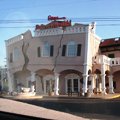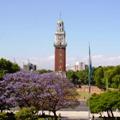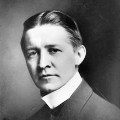
Wonderworks (Pigeon Forge, TN)
An upside down house building and an amusement park for the mind with over 100 interactive exhibits, located in Pigeon Forge, Tennessee. Everything here is upside down, an interesting experience because the visitor feels like running against gravity.
Full Post

Ripley’s Building (Ontario, Canada)
Known for the collection of odd and unbelievable things and artifacts Ripley’s Believe It or Not! franchise just had to have this kind of building.
Full Post

A (very brief) Guide to Rome
No city in the world equals the history of the Eternal City. Founded 2700 years ago, Rome long reigned as Capital of the World. Rome’s history spans two and a half thousand years. It was the capital city of the Roman Kingdom, the Roman Republic and the Roman Empire, which was the dominant power in Western Europe.
Monumental buildings like the Colosseum are reminiscent of the era when emperors like Nero and Trajan ruled the Roman Empire. But today’s Rome owes much of its attractiveness to the Renaissance period when new squares like Campidoglio were created and new buildings were constructed including the world’s largest church, the Saint Peter’s Basilica.
Predominant Architectural Style:
Rome’s architecture over the centuries has greatly developed, especially from the Classical and Imperial Roman styles to modern Fascist architecture. Rome was for a period one of the world’s main epicentres of classical architecture, developing new forms such as the arch, the dome and the vault. The Romanesque style in the 11th, 12th and 13th centuries was also widely used in Roman architecture, and later the city became one of the main centers of Renaissance and Baroque architecture. Rome’s cityscape is also widely Neoclassical and Fascist in style.
Places to See:
Colosseum: The most famous building of the Roman Empire is probably the Colosseum. The building accommodated more than 55.000 spectators and was home to many games featuring gladiators and wild animals.
Pantheon: The Pantheon was built in 118 AD by emperor Hadrian as a temple for all pagan gods. The building’s immense dome was the largest dome in the world for more than 13 centuries.
Trevi Fountain: Rome’s most spectacular fountain is the Fontana del Trevi or Trevi Fountain. The large 18th century fountain occupies a small square which is usually packed with tourists.
St. Peter’s Basilica: The largest church in the world, this great building with Michelangelo’s impressive dome is the center of christianity. The opulence of its interior bears testimony to the wealth of the catholic church in the 16th century.
Piazza di Spagna: The Piazza di Spagna is one of the most popular tourist locations in Rome. The famous Spanish Steps lead to the Trinita dei monti, a French church with rosy facade.
Full Post

A (very brief) Guide to Buenos Aires
Buenos Aires, the capital and largest city of Argentina, is one of the most mesmerizing cities in the Americas. Plenty of magnificent buildings and monuments recall the city’s heyday in the 19th and early 20th century when Europeans emigrated to this prosperous metropolis.
Despite its European connections, Buenos Aires has a flavor all its own. Street performers doing the tango are as much a part of the landscape as famous buildings like the opulent, French-designed Teatro Colon. Local culture is celebrated in the weekly Mataderos Fair, featuring regional food, crafts and horse races. The city’s dozens of neighborhoods, each with its own personality, offer museums, restaurants, shopping, history, dancing and outdoor activities to suit any taste or budget.
Predominant Architecture:
Buenos Aires architecture is characterized by its eclectic nature, with elements resembling Barcelona, Paris and Madrid. There is a mix, due to immigration, of Colonial, Art Deco, Art Nouveau, Neo-Gothic and French Bourbon styles. Italian and French influences increased after the declaration of independence at the beginning of the 19th century, though the academic style persisted until the first decades of the 20th century.
More recent architecture can be found as well, in particular in the gentrified Puerto Madero district where modern skyscrapers tower over the old docks.
Places to see:
Recoleta Cemetery: Many presidents and historic figures important to Buenos Aires history are buried there. The architecture styles of the tombs range from neo classic to art deco and the some of the sculptures have declared national historic monuments.
San Telmo: Buenos Aires has tons of really different neighborhoods, but none of them embodies the traditional culture like the bohemian San Telmo.
Puerto Madero: By day, this riverfront area is a booming business and shopping district and by night, a hip neighborhood with pricey restaurants and fashionable clubs.
Casa Rosada: The government’s executive branch is housed in this building, a strange mix of various architectural styles, perhaps best known for the balcony from which Evita rallied the working class crowds.
Caminito: Colorful and traditional, this walkway in the La Boca area is dominated by tango dancers and artisans.
Full Post

Bertram Grosvenor Goodhue (1869 – 1924)
Bertram Grosvenor Goodhue was an innovator who combined Gothic and Hispanic designs with modern ideas. He revolutionized church architecture by reawakening Medieval traditions, and his fanciful Spanish Churrigueresque buildings for the Panama-California Exposition brought new energy to Spanish Colonial Revival architecture in the United States.
Bertram Grosvenor Goodhue never attended college. Instead, at age fifteen he went to work in the New York office of Renwick, Aspinwall and Russell. In 1898, he formed his own partnership with Cram, Goodhue and Ferguson.
Later in his career, Goodhue moved beyond Gothic ornamentation to explore simple classical forms, designing landmark buildings such as the Nebraska State Capitol. He later adopted a lighter, Romanesque style. Today Goodhue is considered an American modernist.
Notable Buildings:
1915: Panama-California Exposition Buildings, San Diego, California
1922: Nebraska State Capitol building
1924: National Academy of Sciences Building
1924: Master Plan for the Califorinia Institute of Technology
Full Post

Bruce Goff (1904 – 1982)
Bruce Goff did not receive a formal education in architecture. At age 12, he apprenticed to Rush, Endacott of Tulsa, Oklahoma. Bruce Goff became a partner in the firm in 1930, and later became a professor of architecture at the University of Oklahoma.
Expressive and original, Goff’s buildings were often constructed with unusual, throw-away materials. Bruce Goff was a friend of Frank Lloyd Wright’s, and, like Wright, Goff based his works on the principles of Organic Architecture. However, Goff developed his own approach to organic design, creating complex, idiosyncratic buildings that critics often found shocking.
Many fellow architects were suspicious and critical of the individualistic and unschooled Bruce Goff. In 1955, Goff left the ultra-conservative University of Oklahoma and withdrew from active practice amidst a sex scandal and charges of homosexuality.
Today, Bruce Goff is widely praised for his highly creative, original contributions to 20th century architecture.
Notable Buildings:
Bruce Goff designed about 500 projects in his lifetime; 140 of them were built. Many were private homes in isolated regions of the mid-western United States.
Full Post

Flute
Originally from Greek columns, these are hollows or channels cut vertically in the shafts of columns or pilasters. The upper surface can be sharp edged or finished with a radius. The flute is a stone version of a bundle of sticks that were originally used for columns.
Full Post

Finial
Finials were originally an ornamented stone carving at the top of a buttress to offer added weight for vertical support. Now they can be any ornament added to the top of a gable, pinnacle, canopy, or spire. These are a Gothic element.
Full Post

Can Architects predict the future?
Abu Dhabi has recently announced plans to turn itself into a sort of Arabian Left Bank, with cultural venues designed by Zaha Hadid, Frank Gehry, and Jean Nouvel. Beijing, meanwhile, has completed the giant steel bird’s nest, the titanium-egg National Theater, and the unusual state television headquarters, which locals have dubbed “the twisted donut.” A tiny sheikhdom on the Gulf and the world’s largest Communist state have unexpectedly become the latest hotbeds of avant-garde architecture.
Avant-garde is a French term that in the late 1800s came to refer to pioneering painters, particularly the Impressionists, who considered themselves to be at the forefront of art. Since that time, the concept of an avant-garde has become popular in architecture, but are steel bird’s nests and twisted helixes really a portent of the future?
In some ways, the term architectural avant-garde is an oxymoron, since an architect, unlike a painter, is able to experiment only within relatively narrow bounds. Buildings are expensive, and they are intended to last a long time, so the people who build them tend to be risk-averse. Even an architect who finds a patron like the crown prince of Abu Dhabi or the Chinese government willing to take chances, still faces the limitations of building regulations and existing construction materials and techniques.
The truth is that buildings belong firmly to their own time. This is especially true of architecture that attempts to predict the future. That’s why the settings of old sci-fi movies are often so funny; the future never turns out the way people imagine. Most buildings have a shelf life of 20 to 30 years; that is, it takes 20 to 30 years before they are perceived as “old-fashioned.” That is not necessarily a bad thing—it would be disorienting to live in an environment that never aged (actually, it would be like living in Las Vegas).
One day, say in 2050, people will look at the bird’s nest, and the twisted donut, and think, “Pretty good for its time,” or, “What was all the fuss about?” For whatever the architecture of the day, it almost certainly will not include bird’s nests or twisted donuts. The real question about new buildings should never be “Are they cutting edge?” but “Are they good?”